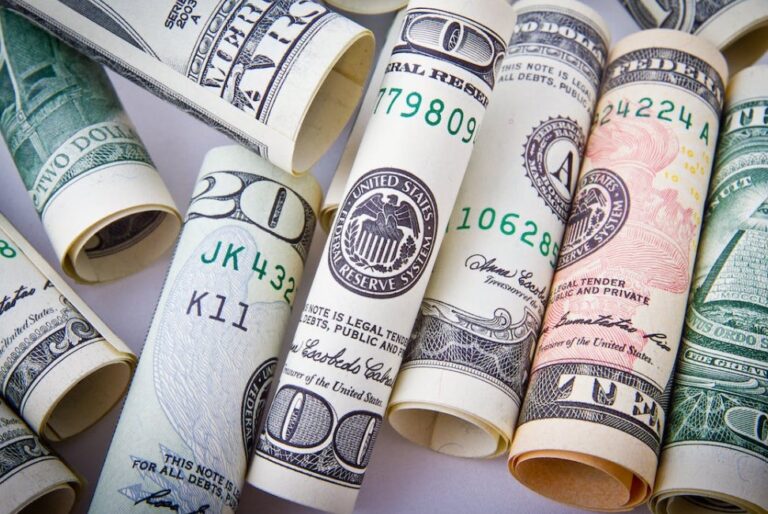When navigating the intricacies of economic indicators, one term that frequently surfaces is “Personal Consumption Expenditures” or PCE.
Imagine it’s the early 1900s, and you’ve just received your hard-earned paycheck. You’re excited to head to the local general store to purchase a new pair of shoes, a bottle of milk, and perhaps a shiny new pocket watch. Fast forward to today, and our expenses might involve monthly streaming subscriptions, avocado toasts, or the latest smart gadget.
What ties these purchases over time is something economists term ‘Personal Consumption Expenditure’ (PCE). But what exactly is PCE, and why is it deemed so crucial in the realm of economics? Let’s delve into this.
Table of Contents
What is personal consumption expenditures?
PCE represents the value of goods and services consumed by individuals. These can range from everyday items like groceries and clothing to services like healthcare and leisure activities. The U.S. Bureau of Economic Analysis tracks this data, providing insights into consumer behavior and overall economic health.
This includes both what people are directly spending out-of-pocket and the imputed value of services like healthcare and education, which might not involve direct payments. It’s essentially an indicator of where our money goes when we spend it, whether on necessities or luxuries.
PCE tracks consumer financial behavior, including how much they spend and whether they save. It also demonstrates how consumer behavior can vary in response to pricing changes.
PCE vs. Consumer Spending
While they might seem synonymous, it’s essential to differentiate between PCE and consumer spending. The latter usually pertains to the direct out-of-pocket expenses by households, excluding imputed values.
PCE offers a more holistic perspective by accounting for all forms of consumption, even those not directly paid for by consumers.
Personal consumption expenditures price index
PCE Price Index is a measure of the average change over time in the prices paid by consumers for goods and services. It’s one of the primary metrics used by economists and policymakers to gauge inflation in the U.S. economy.
It is derived from Personal Consumption Expenditures data, which is gathered and published by the U.S. Bureau of Economic Analysis (BEA).
The PCE price index offers two figures. One comes from all spending categories and the second is recognized as the core PCE price index which excludes information on food and energy.
The core PCEPI can enhance the visibility of an underlying inflation trend. That’s because the prices of food and energy, which fluctuate more frequently than other prices, can mask it.
How to track personal consumption expenditures price index
To determine the PCE Price Index, the BEA utilizes the PCE’s current dollar value. As previously indicated, PCEPI displays price inflation or deflation that happens over time.
The PCEPI, like most price indices, uses real data and a deflator (the PCE deflator) to calculate the amount of seasonal price change.
The PCE Price Index and the Core PCE Price Index both display how much prices fluctuate from one time period to the next (again, excluding the cost of food and energy). PCEPI breakdowns also indicate price inflation/deflation per category.
How PCE is measured
Measuring Personal Consumption Expenditures (PCE) involves aggregating the value of goods and services consumed by households. It’s a comprehensive measure that plays a significant role in determining the Gross Domestic Product (GDP) of a nation, especially for economies like the United States where consumer spending is a significant component of economic activity.
PCE is divided into consumer goods and services, like other economic breakdowns. The consumer goods figure includes both durable and nondurable products as components.
Items with a three-year lifespan or more are considered durable. Automobiles, electronics, home appliances, and furniture are a few examples. The lifespan of nondurable items is often less than three years. Products like clothing, gasoline, and cosmetics fall under this category.
Tasks completed for the benefit of the recipient are referred to as services. Legal counsel, housekeeping, and plumbing are a few examples of services.
Advantages and disadvantages of PCE
Personal consumption expenditures are a significant component of a country’s Gross Domestic Product (GDP). So here are a few of it’s advantages and disadvantages
Advantages
- Economic indicator: PCE is a primary measure of consumer spending and can be used as an indicator of the economic health of a country. High consumption typically suggests a robust economy.
- Policy decision aid: Policymakers use these data to guide monetary and fiscal policies, helping to address inflation or deflation in an economy.
- Broad coverage: Unlike other consumption measures, PCE encompasses a broader range of expenses, including healthcare services paid by third parties and other indirect expenditures.
Disadvantages
- Not a direct measure of well-being: High PCE does not necessarily mean improved quality of life or well-being for citizens, as it merely reflects spending, not the value or benefit derived from that spending.
- Can encourage debt: Emphasis on increasing PCE can lead consumers to spend beyond their means, potentially accumulating unsustainable levels of debt.
- Environmental concerns: High consumption rates can lead to increased waste and environmental degradation, as increased demand can put a strain on natural resources.
Looking ahead…
As society changes, so does PCE. Technological advancements, societal norms, and global events all play a role in shaping our consumption patterns.
By understanding it, we can better grasp the pulse of the economy and, on a more personal level, see a reflection of our collective values and priorities.












